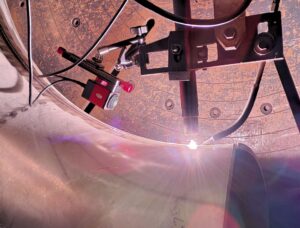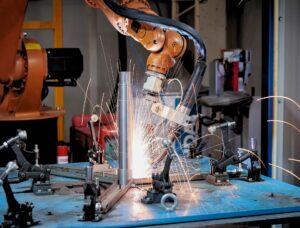Welding is an essential process used in industries such as construction, automotive, aerospace, and manufacturing. Whether you’re a DIY enthusiast or an aspiring professional, learning welding techniques, essential tools, and safety precautions is key to mastering the trade. Explore this beginner’s guide to welding techniques and tools. Understanding welding techniques, safety tips, and essential tools is crucial for producing high-quality welds. Incorporating weld monitoring cameras into your process can significantly improve weld inspection and quality, ensuring precision and minimizing defects.
What is Welding?
Welding is the process of joining two or more metal pieces using heat, pressure, or both, forming a strong, durable bond. It is widely used in infrastructure projects, industrial manufacturing, and metal fabrication.
Why is Welding Important?
- Strong and durable – Creates permanent metal joints
- Versatile – Used in many industries and applications
- Cost-effective – Provides long-lasting solutions in fabrication and repair
Common Welding Techniques for Beginners
1. Shielded Metal Arc Welding (SMAW) – Stick Welding
- Best for: Construction, pipeline repairs, outdoor applications
- Pros: Works in all weather conditions, cost-effective
- Cons: Requires skill to control the electrode, produces slag
2. Gas Metal Arc Welding (GMAW) – MIG Welding
- Best for: Beginners, automotive repairs, home projects
- Pros: Easy to learn, efficient, minimal slag inclusion
- Cons: Requires shielding gas, limited use outdoors
3. Gas Tungsten Arc Welding (GTAW) – TIG Welding
- Best for: Precision welding, stainless steel, aluminum
- Pros: Produces high-quality welds, no weld slag inclusion
- Cons: Requires more skill, slower process
4. Flux-Cored Arc Welding (FCAW)
- Best for: Heavy-duty welding, construction work
- Pros: High penetration, suitable for outdoor use
- Cons: More fumes, requires proper ventilation
5. Laser Welding – Advanced Welding Technique
- Best for: Aerospace, medical, and precision manufacturing
- Pros: High accuracy, minimal distortion
- Cons: Expensive equipment, requires expertise
Essential Welding Equipment and Tools
- Welding machine – The core equipment for any welding process
- Electrodes and filler metals – Consumables used for forming the weld
- Welding helmet – Protects eyes and face from arc welding light
- Gloves and protective gear – Shields hands and body from heat and sparks
- Clamps and magnets – Secure metal pieces during welding
- Welding visual inspection tools – Help detect welding defects like cracks and porosity
- Welding camera – Allows real-time monitoring and ensures weld quality
Welding Safety Tips for Beginners
- Wear Proper Safety Gear
- Welding helmet with auto-darkening lens
- Flame-resistant gloves, jacket, and steel-toe boots
- Ensure Proper Ventilation
- Welding produces fumes and gases that can be hazardous
- Use an exhaust fan or fume extractor when working indoors
- Prevent Electrical Hazards
- Check for loose electrical connections
- Keep work areas dry to avoid electric shock
- Fire Safety Precautions
- Keep fire extinguishers nearby
- Remove flammable materials before welding
- Monitor Weld Quality in Real-Time
- Use a weld monitoring camera to inspect weld penetration and detect flaws such as slag inclusion or cracks
Common Welding Mistakes and How to Avoid Them
- Insufficient Heat Input – Weak welds due to incorrect temperature
- Solution: Adjust welding parameters based on material thickness
- Poor Joint Preparation – Dirty or uneven surfaces lead to weak bonds
- Solution: Clean and prepare metal surfaces properly
- Moving Too Fast or Too Slow – Affects weld penetration and quality
- Solution: Maintain a steady travel speed and ensure proper arc control
Advancing Your Welding Skills
- Practice Different Welding Positions
- Flat, horizontal, vertical, and overhead welding positions improve technique
- Take Welding Classes or Certifications
- Certifications like AWS (American Welding Society) can boost career opportunities
- Use Welding Technology for Training
- Welding cameras provide live feedback for beginners to improve welding techniques
Conclusion
Mastering the basics of welding requires practice, the right tools, and attention to detail. Using advanced welding inspection techniques such as a welding camera ensures high-quality welds while minimizing common weld defects.
Want to improve your welding precision? Explore Mecaweld’s advanced welding cameras today and take your welding skills to the next level.
Contact us today to learn how real-time weld monitoring can optimize shipbuilding and repair operations!



